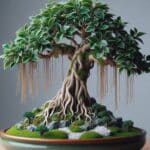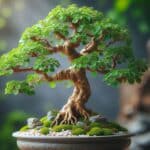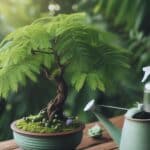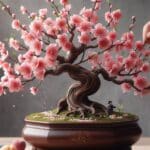Bonsai trees are often thought of for their tall, imposing presence on the California coast. However, there are also reasons to consider growing redwood bonsai plants.
There are several kinds of redwood plants you can grow for bonsai. Among these are the dawn redwood and the coast redwood, both of which have very soft, needle-shaped foliage and interesting roots that make them suitable for bonsai.
Interesting Facts about Redwood Bonsai
| Height | 14-18” |
| Width | 10” |
| Sunlight | Full sun |
| Flowering Time Length | N/A |
| Lifespan | 100+ years |
| Scientific Name | Metasequoia glyptostroboides and Sequoia sempervirens |
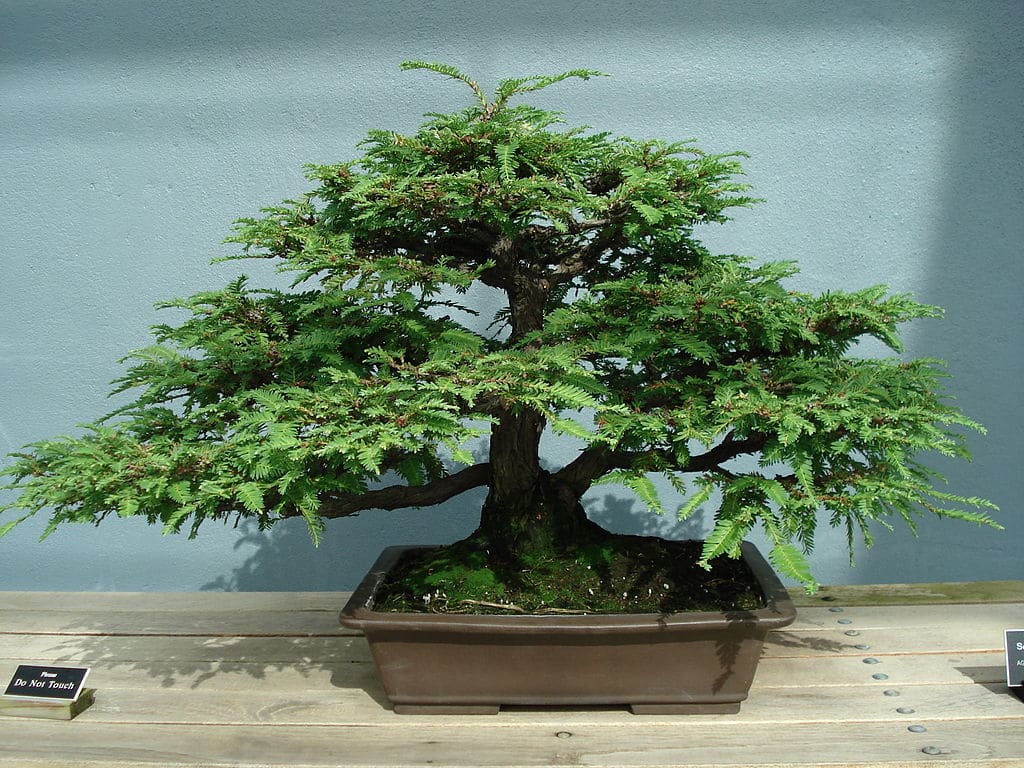
Types of Redwood Bonsai Trees
Three main redwood tree species are commonly used for bonsai: Dawn Redwood (Metasequoia glyptostroboides), Coast Redwood (Sequoia sempervirens), and Giant Sequoia (Sequoiadendron giganteum).
The Dawn Redwoods are deciduous trees. Dawn redwood bonsai
is native to China and is known for its light-green leaves that turn red in the fall.
The Coast Redwood or Coastal Redwood bonsai is an evergreen tree that is native to the Pacific coast of the United States and is known for its orange-brown bark and thin, flat leaves that resemble needles.
The Giant Sequoia bonsai is also an evergreen tree that is native to the Sierra Nevada mountain range in California and is known for its massive size and reddish-brown bark.
Growing Redwood Bonsai from Seed or by Propagation
Propagation Redwoods can be propagated from seeds, cuttings, stump sprouts, and root sprouts.
Redwood seeds are tiny and come from the inch-long redwood cones that fall from the branches in autumn. Each cone contains one to two dozen tiny seeds. However, redwood seeds rarely find the essential conditions to germinate, so the tree has evolved a variety of routes for reproduction.
Redwoods are able to sprout new trees from the base of their trunk. Sprouts are carefully cut and propagated in a nursery. To maintain a strong redwood genetic bank in the region, nurseries try to balance efforts between starting trees from seeds and cuttings.
Redwood cuttings will have less diverse genetics than trees that were started from seeds because cuttings make direct clones of the parent tree whereas seeds contain a new genetic map.
Dawn Redwood trees propagate reliably from hardwood cuttings, which must be gathered in early winter after the tree loses its long foliage. If treated with hormone powder and grown in humidity, dawn redwood cuttings will put down roots in just one to two months and will be ready for transplant by autumn.
How to Care for Redwood Bonsai
Sunlight
Regardless of the species, redwood bonsai trees should always be planted in full sunlight. However, if you plan on growing your bonsai in a climate where the summers get extremely hot, you may need to provide it with a bit of shade during these hot periods.
Either way, ensure your dawn redwood tree stays protected from the frost, as it does not tolerate a freeze well.
Soil
Redwood bonsai trees thrive in well-draining soil that mimics their natural habitat, such as a mixture of coarse sand, organic matter like peat moss or compost, and small gravel or perlite to enhance drainage. This soil composition ensures that water flows freely through the root zone, preventing waterlogging and root rot.
Redwood bonsai trees prefer slightly acidic to neutral soil with a pH range of 6.0 to 7.0, which supports nutrient uptake and healthy growth. Additionally, incorporating inorganic components like akadama or lava rock helps provide stability and aeration to the soil, promoting optimal root development and overall vigor in redwood bonsai trees.
Watering
Water your redwood liberally during the summer months, keeping the soil consistently moist. At the same time, you need to be careful about overwatering these plants, as it can lead to root rot.
Fertilizing
Fertilize your bonsai in the early spring with a high-nitrogen fertilizer – do not attempt this at any other time of the year, as it can burn the roots. You can feed well balanced organic fertilizer in the summer, but you need to do so very sparingly to limit uncontrolled growth.
Potting and Repotting
You will need to repot your redwood once every two years. The roots grow quickly and rapidly and will fill up all of the available space in the container, lifting the root ball out of the pot. You may need to prune the roots every time you repot your plant, too.
Pruning Redwood Bonsai
Redwoods naturally grow in a straight, upright form, so you shouldn’t have to do a ton of training or pruning to get it to grow this way in a bonsai setting. You may find that your bonsai produces lots of new buds, but these don’t need to be removed when pruning. Similarly, you can choose to wire the branches but they can be somewhat brittle. As a result, many bonsai growers use guy wires to lower the height of the branches instead.
Pests and Diseases
Redwood is very rarely affected by diseases and pests, particularly when grown indoors. You may want to watch out for root rot, a condition that can be caused or worsened by overwatering.
Where to Buy Redwood Bonsai
You can purchase redwood tree saplings just about anywhere (or their seeds) but it’s best to purchase trees or their seeds that are specifically meant for bonsai growing. Check your favorite bonsai outlet or distributor to see what they have in stock – either type of redwood species should suit you quite nicely.
FAQs
Can Dawn Redwood bonsai be kept indoors?
Yes, Dawn Redwood bonsai can be kept indoors temporarily, but they prefer outdoor conditions for long-term health and growth. Indoors, they may struggle due to lower light levels and limited airflow.
What is the best soil for redwood bonsai trees?
The best soil for Redwood bonsai trees is well-draining and slightly acidic. A mix of bonsai soil, such as akadama, pumice, and lava rock, with organic matter like compost or pine bark, can provide the ideal growing medium.
When should I repot my redwood?
Redwoods are typically repotted in spring before new growth begins. This timing allows the tree to recover quickly from the stress of repotting and establish itself in the new soil.
Why is my redwood tree dying?
Several factors could cause a Redwood tree to die, including overwatering, underwatering, poor soil drainage, pests, diseases, or environmental stressors. Assess the tree’s growing conditions and address any issues accordingly to help revive it.
How long does a redwood take to fully grow?
Redwood trees are known for their rapid growth rate, especially in the early years. Under optimal conditions, they can grow several feet per year. However, the time it takes for a Redwood tree to reach full maturity can vary depending on factors such as climate, soil quality, and available resources, with some specimens taking hundreds of years to fully grow.
Final thoughts
In conclusion, redwood bonsai care requires attention to its specific needs, including sunlight, water, pruning, and soil conditions.
With proper maintenance and attention to detail, enthusiasts can enjoy the timeless beauty and graceful elegance of a redwood bonsai for years to come.


